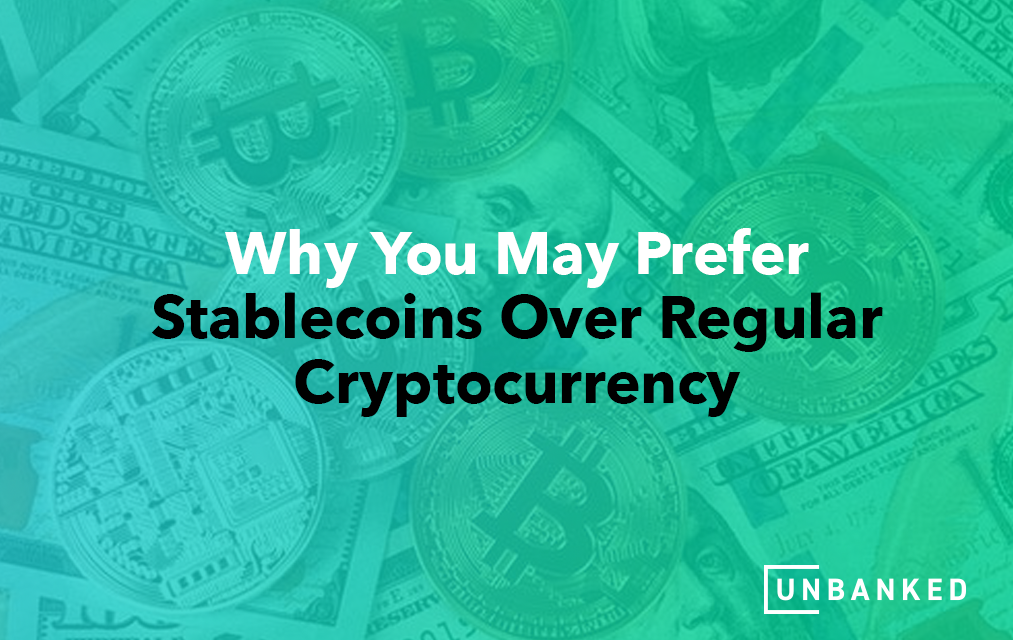Cryptocurrencies are highly volatile, and this can be seen by the fluctuations in Bitcoin prices over the last couple of months. Its prices abruptly skyrocketed in April up to $65,000 and then plummeted to $30,000 in May. Such fluctuations might be beneficial to investors who plan to hold cryptocurrencies for a long time but not good for people who plan to use their cryptocurrencies to buy goods and services. This makes it clear that stability is a rare quality in cryptocurrencies. Stablecoins, on the other hand, are tied to stable fiat currencies like the US dollar. Stablecoins like USD coin, Binance USD are tied to the US dollar. These are the largest stablecoins by market capitalization. However, these stablecoins are not regulated like fiat currencies and commodities although their value is tied to it. This is why they can dip below the currencies they are pegged at. Stablecoins are held by crypto traders who want to hold and use cryptocurrencies without paying the high conversion fee to fiat currencies. Stablecoins enable the ease of making cash transactions without the risk of high volatility.
Types of Stablecoins
Stablecoins are tied to different things so that they remain non-volatile and exhibit price stability. There are three major kinds of stablecoins:
- Fiat-collateralized stablecoins: These types of stablecoins are pegged to the value of fiat currencies like the US dollar. This means that the fiat currencies are used as collateral. This is the easiest way to create a stable cryptocurrency. The companies which provide stablecoins claim to have invested in real currencies or commodities of equal value. But since stablecoins are not directly regulated, no one can guarantee what these companies are holding. The value of stablecoins like the Tether (USDT) and USDC is equal to one US dollar and are supposedly backed up by equivalent deposits in dollars.
- Crypto-collateralized stablecoins: Unlike fiat-collateralized stablecoins, these types of stablecoins are backed up by cryptocurrencies. To compensate for cryptocurrency’s stability, these stablecoins are often over-collateralized i.e., less valued stablecoins are issued using higher valued cryptocurrencies. For example, say $100 worth of stablecoins can be issued using $200 worth of bitcoins. This means that even if bitcoin loses half its value, there will be minimal impact on the stablecoins. This is done to protect stablecoins against the high volatility of cryptocurrencies. MakerDAO, an autonomous decentralized organization, issues DAI backed by Ethereum as collateral.
- Non-collateralized stablecoins: These types of stablecoins are neither backed by fiat currencies nor crypto assets. Instead, they operate on a working mechanism that ensures that the stability of these coins is kept intact. The supply of these stablecoins are made proportionate to the changes in its value. For instance, basecoin relies on consensus-based mechanisms that increase or decrease the supply of basecoins, depending on the need.
Potential of Stablecoins
Stablecoins are decentralized, autonomous and at the same time stabilized. Theoretically, they should offer the best of the two worlds. They allow people to get the benefits of blockchain technology without the risk of cryptocurrency fluctuations and volatility. The stablecoin model can be used to bring the use of cryptocurrencies for day-to-day transactions into the mainstream. Payments for consumer loans, insurance solutions, contracts, and financial applications cannot rely on traditional cryptocurrencies – in such cases, stablecoins prove highly beneficial. The following are the areas where stablecoins can be used:
- Smart Contracts: Stablecoins are used for enforcing smart financial contracts which are self-enforceable. Smart contracts are self-executing contracts that do not require the involvement of any third party or centralized authority. Transactions in a smart contract are automatic, irreversible, transparent, which makes them suited for salary, rent, and utility payments.
- Mainstream Commerce: Given that stablecoins are not as volatile as cryptocurrencies, retailers and merchants might be more comfortable accepting them as a form of payment for goods and services. Since stablecoins were actually made to act as a medium for exchange, their commerce use can improve efficiency and outreach. The use of stablecoins will make the e-commerce ecosystem more efficient. Currently, credit card providers charge as high as 3% per transaction. Come, stablecoins with blockchain technology, and these transactions can be made directly between buyers and sellers, eliminating the need for intermediaries. This will reduce costs both for merchants and customers.
- Payments: One of the top advantages of stablecoins is that they offer their users the benefits of fiat currencies. They are easily exchangeable; anyone over a blockchain network can freely exchange their stablecoins for dollars. Stablecoins can also be used for sending cross-border payments and remittances over the blockchain network.
- Safe Harbor: Cryptocurrencies can be switched with stablecoins quickly to protect the value of one’s assets. They provide a “safe harbor” to crypto traders who can reduce the risk of holding cryptocurrency assets without exiting the crypto space.
The Bottom Line
Regulators have expressed concerns that stablecoins pose a threat to the financial stability and sovereignty of central banks. Some stablecoins are not backed up by fiat currencies rather, even more, riskier assets. Currently, there is a lack of a proper regulatory framework that manages stablecoins. There are no auditing and reporting requirements. The Securities and Exchange Commission Chief Gary Gensler has expressed a strong need for regulating stablecoins acting like “shadow banks deposits.” The legislators have expressed concerns over DeFi platforms which rely on stablecoins whose value is tied to the US dollar. However, they do not provide its stability as they may not be backed adequately. Such stablecoins are used by customers as “bank deposits”; however, they are not insured by the Federal Deposit Insurance Corporation like actual bank deposits. Gensler tried to regulate stablecoins as securities, but it was not able to qualify. As stablecoins’ foothold in the crypto space grows more substantial, the regulation is inevitable. But this is not necessarily a bad thing; with greater regulation comes greater legitimization and, thus, greater mass adoption. To know more about stablecoins and other types of cryptocurrencies, read our blog.





